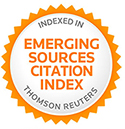Estudio de las tecnologías para el tratamiento de los efluentes generados por una planta de curtiembres en Ecuador
Wastewater treatment technologies review for a tannery in Ecuador
Resumen
Wastewater from tannery industries are highly toxic. Major environmental pollution problems are created by these waters in terms of its quantity and composition, and must be treated to fulfil acceptable values fixed by the local environmental legislation. The purpose of this paper is to review different technologies of wastewater treatment for the tanning industry. The pollutants sources, composition and flows were taken from a real tannery in Ecuador. Based on this information and the liquid effluents mass balance, it was determined that the pollutants that predominate are: the biochemical oxygen demand (BOD), the chemical oxygen demand (COD), suspended solids, the sulphides and chrome. According to these properties, and considering technologies for its removal, different alternatives for processes were selected to treat the wastewater and fulfil the environmental regulations. The mass balances were applied to four integral technologies to treat mixed wastewater (MW). The treatment options considered were: activated sludge biological treatment + ozonation; activated sludge + electrolysis; UASB anaerobic reactor + ozonation and UASB anaerobic reactor + electrolysis. The mass balances indicate that effluents from all schemes comply with the Ecuadorian environmental regulations. Considering the following factors: flexibility, operational ease, waste generation, maturity of the technology and cost, the UASB anaerobic treatment + electrolysis combination is the best option.
Palabras clave
Texto completo:
PDF![]()
Todos los documentos publicados en esta revista se distribuyen bajo una
Licencia Creative Commons Atribución -No Comercial- Compartir Igual 4.0 Internacional.
Por lo que el envío, procesamiento y publicación de artículos en la revista es totalmente gratuito.
 |  |  |



